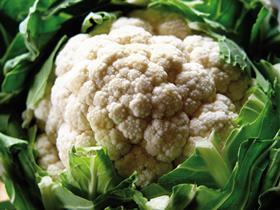
Having moved into July, one could reasonably expect UK crops of calabrese, cauliflower and the rest to be in full swing. However, with arctic temperatures and a soggy spring, the engines of one of the country’s traditional crop groups have been well and truly cooled.
Matthew Rawson, chairman of the Brassica Growers Association, explains: “As everybody knows, we have had a cold spring with wet weather in March. These conditions did hamper the start of the early March planting season, resulting in late planting for broccoli and cauliflower followed by cabbage. As of yet, nothing has caught up, so we are delaying the harvest by a couple of weeks for broccoli and cauliflower. Cabbage will follow one week later.”
The picture is slightly different on Brussels sprouts, which did go into the ground in good time, starting in late April with planting finishing in early May. These and swede are reported to be in good order, with crops growing well as the weather has improved.
Rawson is worried though that the late planting will inevitably delay harvest and lead to a potential clash with cauliflower and broccoli being ready together. Carolyn Coxe, planning and agronomy manager at Produce World, echoes these concerns. She says: “Due to disrupted plantingin March and April the main concern will be the possibility of crops coming in flushes. The management of this will be paramount to maintain the crop continuity for consumers and for grower returns.”
Rawson agrees: “We always need to be working ahead of ourselves and making sure that all the wheels are in motion to get produce to our customers in peak condition when they are expecting it. This can be challenging when you are dealing with factors you can’t control, such as extreme weather conditions. That’s why we plan our land sites and introduce seasonal varieties, which are quick-growing and therefore can be turned around faster than the main crops.”
There are advantages to the unusual conditions however, as Richard Mowbray, commercial director at TH Clements & Son, explains: “This slow-grown crop has resulted in a great quality crop for this time of year. We would like to be back on track by mid-July, but we shall see. Looking at our sprout crop, it should be ready early this year, so if conditions stay good, we are looking at an early August harvest.” He added that availability is “good” now, despite the late start with the main crops.
But there are other issues exercising the thoughts of brassica growers, such as the cost of inflation and soil condition. “
After last year it was left in a horrendous condition and we have all had to work really hard to get the soil in a good condition for this year’s crop,” Rawson explains. “However, there are some areas where the soil is beginning to look stressed, which we will need to be mindful of, as we don’t want drought conditions to come in to play.”
Part of the Brassica Growers Association’s work is to raise the profile of the crops and increase their consumption in the UK, but it also has a strong R&D focus as part of the British Growers Association. “We’ve put this team together so as an industry we can put appropriate projects in place to help us put ‘science’ into the process and therefore make better decisions when it comes to planting and harvesting our crops,” Rawson says.
“We have lots of projects in the pipeline that embrace technology and horticulture, from the growing side to mapping fields, to commercial help with nitrate levels in the soil.”
And changes have been made at the association, which Mowbray believes will see “a more proactive output, which will culminate in higher awareness of brassica crops and in turn have a positive effect on the industry as a whole”.
Mowbray has also been studying consumption trends: “Last year we saw an increase in demand for traditional brassicas, specifically spring greens, cauliflower, broccoli and Brussels sprouts. The trend looks to have continued, especially with cauliflower, which has seen a continued increase into the early part of summer.”
What is required now, he believes, to raise both value and volume of the UK’s brassica crops, is to influence press coverage so that positive messages about the products’ value for money as well as nutritional value are communicated. “We also need to try to engage with consumers by giving something that they are looking for,” adds Mowbray.
Coxe is very positive about the category as a whole and points out that overall, sales values of vegetables have increased significantly this year within all demographics – and for once the weather may even have helped the category with consumers buying veg for longer than usual.



